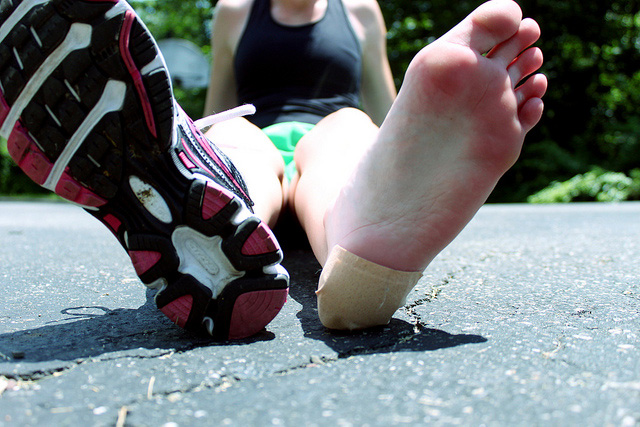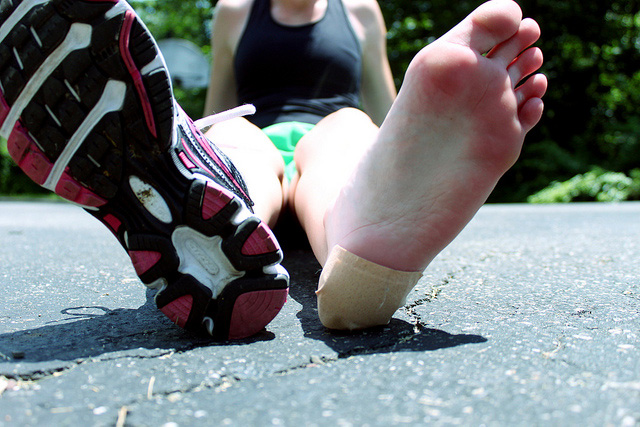
Foot Care for Runners
Monday, August 22, 2016
Careful attention to the condition of your feet is essential, because pain or changes warn that something is wrong. Don't ignore these warnings because they rarely get better on their own and can lead injuries!

Neuroma
This is a swollen nerve usually between the third and fourth toes. You can't see it, but neuroma causes pain in the ball of the foot. Hill running often causes this condition, so leave off hill running for a while.
Black Toenails
The main cause is nails that are too long, jamming into your shoes and bleeding below the surface. Other causes are shoes that are too tight or too much downhill running.
So, keep your toenails short, try a slightly larger shoe or a higher toe box and do more running on flat ground. Black nails grow out or fall off within a few months.
Calluses
Calluses are areas of thickened skin caused by repetitive pressure on one spot. Over-pronation often causes calluses on toes and severe over-pronation causes inflammation of the Achilles tendon and Runner's Knee.
Calluses on the little toe or outside edge indicate supination, putting stress on the outside of feet and ankles which can lead to stress fractures, sprains and inflamed tendons.
Treatment
The best treatment for over-pronation is to wear stability or motion control shoes and for supination, cushioned shoes or a corrective orthotic insert to support your high arch.
If one foot is more callused, you could have one leg shorter which you can correct with a heel lift. Or you could just be stronger on the callused side and only need a stretching plan from a physical therapist to strengthen the weaker leg.
Plantar Fasciitis
Plantar fasciitis causes pain in the heel or arch in one foot only - because of leg–length difference, a strength imbalance or tight calf muscles. Gentle stretching of these muscles should ease the pain and stop it recurring.
Bunions
This is a bony lump on the side of your foot that can get inflamed and painful because the big toe's being pushed out of alignment. Runners with flat feet that roll inward tend to get bunions because of over-pronation.
Wear shoes that are wide enough and have a deep toe box. Avoid shoes with seams that rub against the bunion and you may also need orthotics to correct your pronation. Bunions are easy to correct in the early stages, but bad cases need surgery!
Foot care should be second nature to runners seeking the perfect stride to success!
